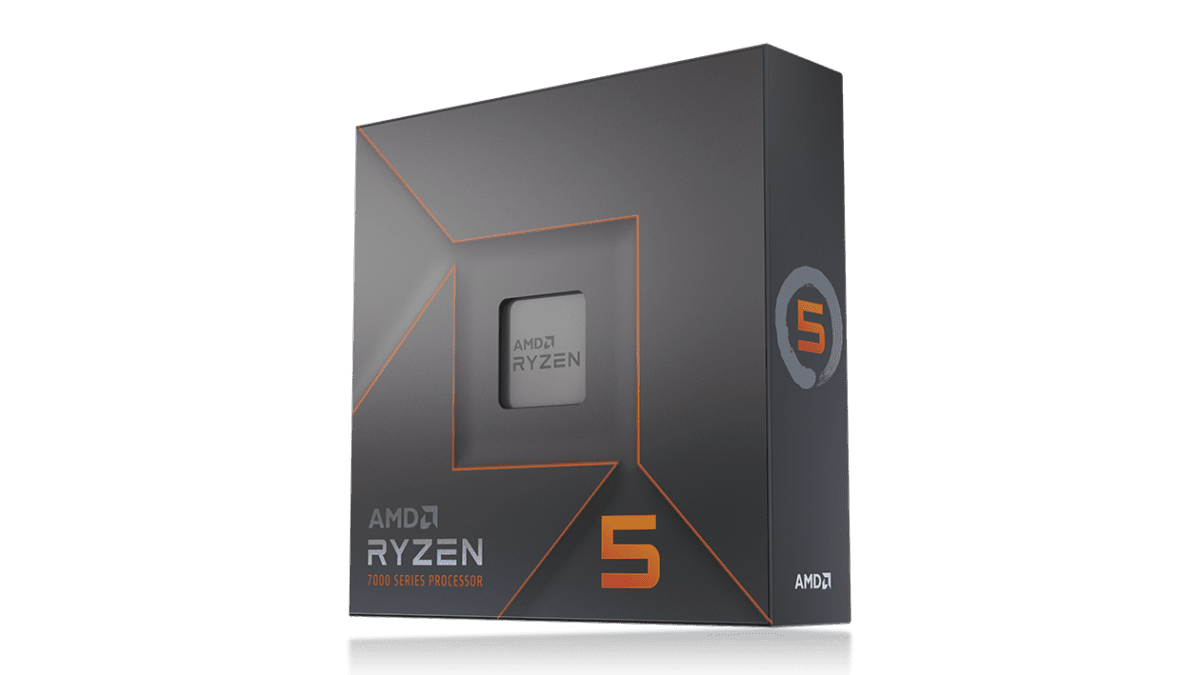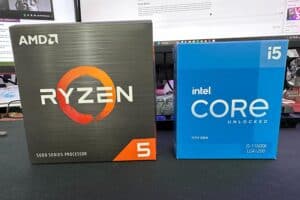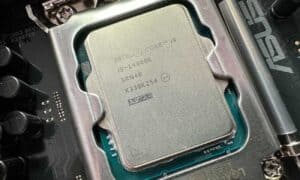AMD Ryzen 5 7600 vs Ryzen 5 7600X
So, which is better? The none X or the X?
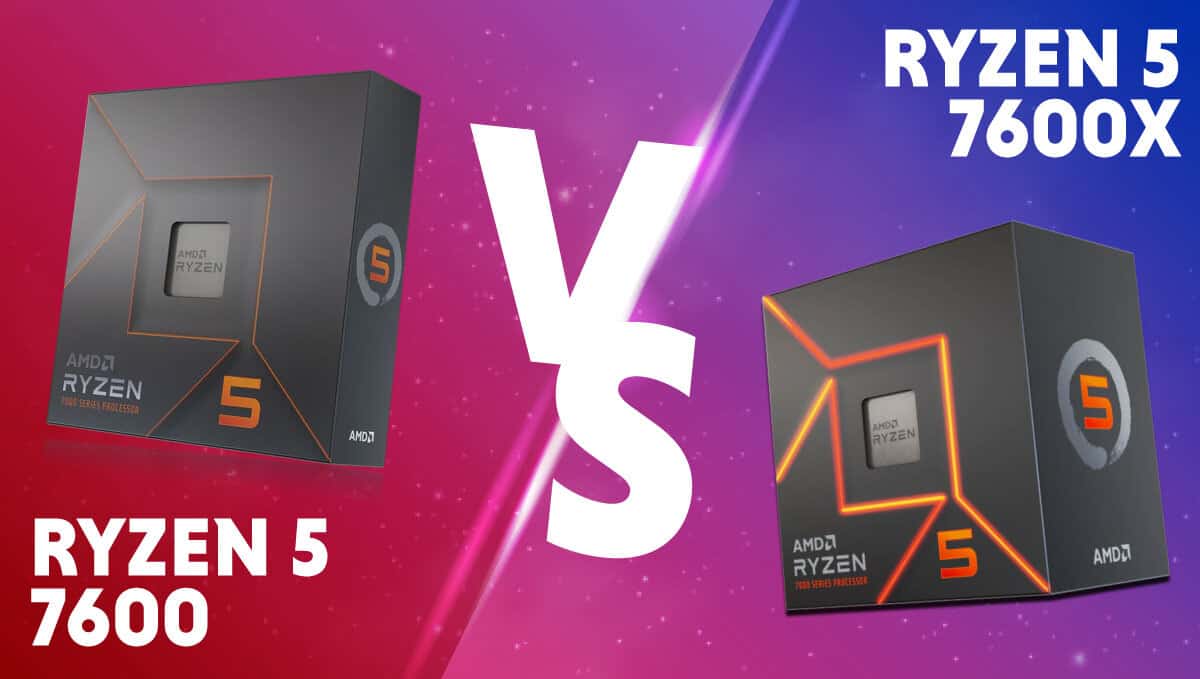
WePC is reader-supported. When you buy through links on our site, we may earn an affiliate commission. Prices subject to change. Learn more
AMD Ryzen 5 7600 vs Ryzen 5 7600X, which is better? AMD announced at its CES 2023 keynote presentation that it was launching three “none-X” Ryzen 7000 series CPUs. These CPUs are going to totally redefine the word efficiency, as each of them has a default TDP of just 65W.
Now Read: Is the Ryzen 5 7600 worth it?
in this article, we’re going to analyze the similarities and differences between the two CPUs and make deductions on performance based on that. Sadly we don’t have any performance details for the 7600 as of yet, but we’ve been doing this long enough to make educated assumptions.
Without further delay, let’s jump into the specifications of each of the CPUs in the arena today.
Ryzen 5 7600 vs Ryzen 5 7600X: Specification comparison.
For the sake of an easier read, we’re only going to cover the specifications that are different and explain what the change means. We won’t bore you with the inner workings of the CPU.
With that being said, let’s dive in
CPU cores
You may be inclined to think that because the TDP is lower, but the same CPU cores are used, there has to be something different about the CPU cores. In reality, there isn’t much physically different, but there are some tweaks to CPU core speeds as we will explain below.
both the 7600 and 7600X use the same Zen 4 CPU core that we’ve all come to know and love.
CPU core base speed
The CPU speed is an important metric when comparing two CPUs, the base speed is the speed at which the CPU core operates at 0% load (or as close to 0% as possible). Or, the lowest speed at which the core operates, if you prefer. This largely determines how efficient you can get the CPU to be at lower usage. But leaves a higher, longer gap to close when boosting.
In short, the lower the base speed, the lower the base TDP. But that leaves a long gap to close up the core’s boost potential, creating a slower reaction time to heavier loads. so creating efficiency isn’t without its issues. It’s also much harder to get a CPU core to boost the lower you have the base speed.
A CPU core will not behave the same at 6GHz as it would at 2GHz, it doesn’t work like that. If that were the case, every CPU would have a base speed of 1GHz and boost up to 6Ghz.
CPU core boost speed
The CPU core boost speed is the maximum speed the CPU core can achieve with automatic boosting. There are actually two types.
You have all core boost speed and core boost speed. The former is the maximum speed that all cores can achieve simultaneously and the latter is the fastest single-core boost speed. There’s only really a 0.1 – 0.3 GHz difference on average between the two.
CPU max boost speed is not an upper limit of the CPU, it’s just what can be achieved automatically. In this case, it’s Ryzen PBO driving the boost speed. However, you can push the CPU beyond these limits with a manual overclock.
The 7600X has a faster core boost speed, which will make it more proficient in games, and give it an edge in multi-core workloads. But it achieves this with a massive TDP compared to the 7600. If we had to scale this and measure performance per watt, we guarantee the 7600 would walk all over the 7600X.
TDP
TDP stands for thermal design power and is the maximum amount of thermal energy a component can output under normal operating conditions. There are two kinds of TDP nowadays, there’s default TDP and boost TDP. Default TDP is the amount of thermal energy a component emanates at base speeds. And boost TDP is exactly what it says on the tin, the TDP of a component at boost speeds.
The boost TDP of the 7600 is unknown currently, but the boost TDP for the 7600X is around 140W
The lower your TDP the more efficient your CPU is, and you don’t have to try as hard to keep it cool. wasted energy is terminated as heat energy, that’s a fact for almost every single electrical component. The more powerful something is, the more energy it wastes. The fact that the 7600 can come this close to the 7600X and with a base TDP of just 65W is incredibly impressive.
Ryzen 5 7600 vs Ryzen 5 7600X: specs
Each of the CPUs today has similar specifications, so they may look like they’ll perform the same at first glance. But once you look deeper, the performance differences become clearer.
Here at the specifications of each CPU:
Ryzen 5 7600

AMD Ryzen 5 7600 (Non-X)
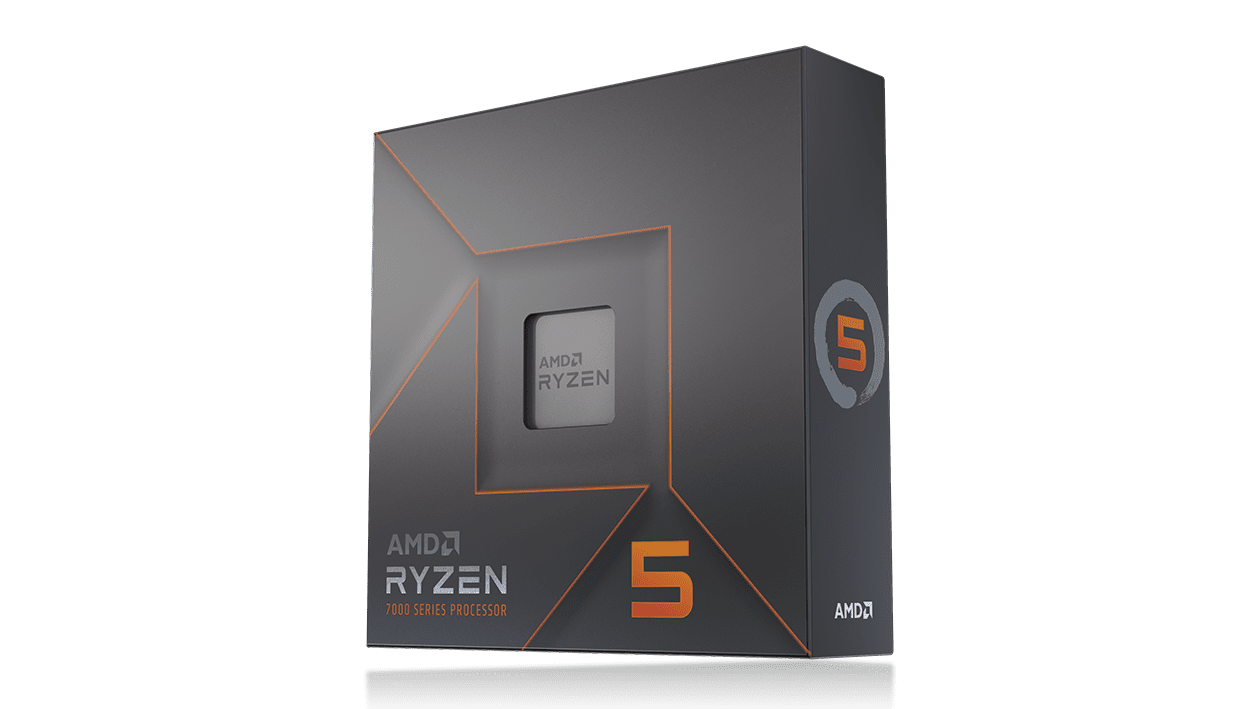
Cores
6
Threads
12
Base speed
4.7GHz
Boost speed
5.3GHz
Cache
L3 32MB
Socket
AM5
- Architecture: Zen 4
- Core count: 6
- Thread count: 12
- Base speed: 3.8GHz
- Boost speed: 5.1GHz
- Cache: 32MB
- TDP 65W
As you can see, the specifications of the Ryzen 5 7600 state the TDP as 65W, which is incredibly low considering the 7600X, its bigger brother, consumes well over 105W.
Ryzen 5 7600X

AMD Ryzen 5 7600X

Cores
6
Threads
12
Base speed
4.7GHz
Boost speed
5.3GHz
Cache
L3 32MB
Socket
AM5
- Architecture: Zen 4
- Core count: 6
- Thread count: 12
- Base speed: 4.7GHz
- Boost speed: 5.3GHz
- Cache: 32MB
- TDP: 105W
The 7600X may seem much more powerful on paper, and you’d be correct. But being better isn’t always just about being more powerful.
Ryzen 5 7600 vs Ryzen 5 7600X: Price
The price changes everything. What’s the point of having an efficient CPU if it costs the same or more than the full-power variant? Well, you’ll be happier to know that the MSRP of the 7600 is $70 cheaper than the MSRP of the 7600X.
The Ryzen 5 7600X comes in at around $499, whilst the Ryzen 5 7600 comes in at around $429.
Ryzen 5 7600 vs Ryzen 5 7600X: Conclusion
The Ryzen 5 7600X is obviously the more powerful CPU, but at what cost? A bigger one, literally, than the 7600. The 7600 stands to be so efficient you might be losing money not buying one.
Not literally of course but we can’t wait to see what the 7600 has in store for us performance-wise. This CPU is an incredible way to go if you’re building something in a smaller form factor and still want mainstream processing power. Or you’re trying to negate the AM5 upgrade costs where you can.
The 7600 is so efficient, you might even get away with just using the stock cooler. We’ll have to see as soon as the CPUs drop. So AMD Ryzen 5 7600 vs Ryzen 5 7600X, which is better? It depends entirely on your use case, but we can’t wait to see what the 7600 has to offer.
Watch this space for more performance metrics as soon as we have them.

